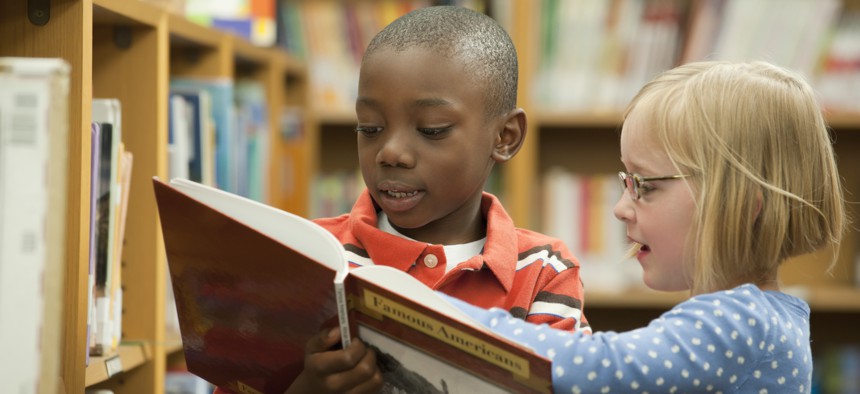Federal Spending on Kids is Up, But Expected to Fall

Ariel Skelley via Getty Images
Pandemic-era programs gave the funding a boost. As it phases out, more costs could shift to states and localities.
Federal spending on children hit an all-time high last year, but will likely decline over the next decade, leaving state and local governments to navigate the gap.
That’s according to a new report from the Urban Institute. Driven by pandemic relief efforts, federal spending on children under the age of 19 hit about $10,700 per child in 2021, a more than $3,000 increase over 2020.
Federal outlays are expected to drop to $9,250 per child in 2022 and continue decreasing over the next several years as adult entitlement programs, such as Medicare and Social Security, are prioritized, the report said.
In 2021, the federal government invested $482 billion in children, representing 9.4% of all federal outlays. Over the next decade, that is projected to drop to 6.4%.
Federal spending that supports children includes tax breaks for families with kids, as well as health, nutrition and early-education programs.
Maintaining support for children is critical, even during crises or economic distress, “because we know these programs have a positive long term impact on children and for the overall economy,” Cary Lou, one of the researchers who worked on the report, told Route Fifty.
Record-high spending followed by a decrease is not an entirely new pattern, and there are lessons to be learned from prior years, Lou said.
During the Great Recession, federal spending for kids increased to offset the decreased revenues from state and local governments, Lou said. But, he explained, then the federal government pulled back funding before states and municipalities had fully recovered from the recession, leading to overall decreased spending in 2012.
“We're keeping our eyes out for what's happening this time around,” he said.
Two-thirds of total public support for children comes from state and local governments, which are responsible for 94% of education funding.
Last year, nearly half of federal support arrived as tax provisions and tax programs. That was by far the largest category of support coming from the federal government, Lou noted.
“This is sort of a longtime trend where we've seen more support through tax provisions like the child tax credit and income tax credit,” he said.
That kind of support was bolstered during the pandemic with stimulus checks, also known as economic impact payments.
“That really is almost direct income support for children's families, which is, I think, really important, especially during the pandemic, and has largely contributed to this huge drop in child poverty,” Lou said.
There’s also been a change in which programs are prioritized, Lou said. Funding for programs like Temporary Assistance for Needy Families has shifted toward health care and nutrition programs, like the Supplemental Nutrition Assistance Program.
Molly Bolan is the assistant editor for Route Fifty.
NEXT STORY: How Cryptocurrency Could Help to 'Crowdfund' Public Projects






